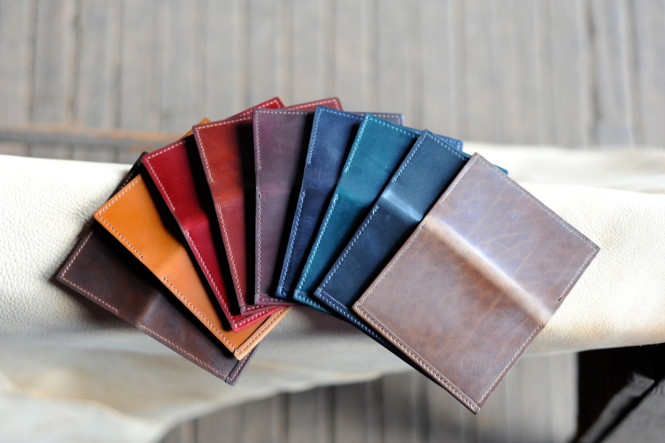I was recently chatting with my friend Phil Kalas, who owns Ashland Leather and runs operations over at Horween. Because of his special relationship with the Horween tannery (he’s worked there for about a decade), Phil has a vast knowledge of leather and always seems to have access to some unique and rare hides. We were discussing the logistics of selling some of his popular wallets on Massdrop (they’re actually up there now, and selling fast), but as per usual I got sidetracked and started asking him about the current shell cordovan shortage, among other things.
Many of us menswear nerds have heard about the Great Shell Shortage at this point; that rare horse butt leather has gotten even rarer, and many footwear and leather goods companies have scaled back production of pieces in cordovan. That said, Phil tells me that the shortage is not so much caused by a lack of hides, but a huge increase in demand. Shell is more popular than ever, and now quantities are low because of it (I guess it’s time to introduce horse meat into the American diet).
We also chatted a bit about the colors of shell cordovan; I’ve always found it interesting that it’s available in such a fixed set of colors, each with its own lore and rarity (lighter colors are always rarer than dark ones, because blemishes are harder to hide). Not only this, but the naming system is odd, too; some colors have common names (like ravello, cigar) and some have numbers (like #8, #4, #449).
Most of these names, much like the tanning process itself, were created around a century ago. Back then, marketing buzzwords were less of a thing, so colors were named matter-of-factly in order to minimize confusion. Take #8, for example – this color is perhaps the most famous shade of Horween shell, its deep burgundy hue becoming almost synonymous with the word cordovan. The color’s name comes from the fact that it is dyed in Horween’s secret red formula eight times. Compare that with #2 or #4, on the other hand, which are dyed two and four times, respectively, resulting in a lighter color (see the photo above). I like this kind of naming convention, personally – the to-the-point name holds interesting information about the item, in the same way that a military-issue M-65 jacket or P-3 frame tells the story of the item that bears its name.
Of course, some brands choose to ‘spice up’ their names to make them sound more interesting to the general public. For instance, Carmina uses Horween #2 shell in their footwear, but refers to it as ‘ruby.’ Not a bad name, I suppose.
There are many other shades of shell, of course, but I’ll just have to save those for another time. After all, I’d already spent too long chatting Phil up, and we both needed to get back to work. Nonetheless, it’s always interesting talking with people in the business, as you’ll never know what you might learn.
(Photo via Horween)
